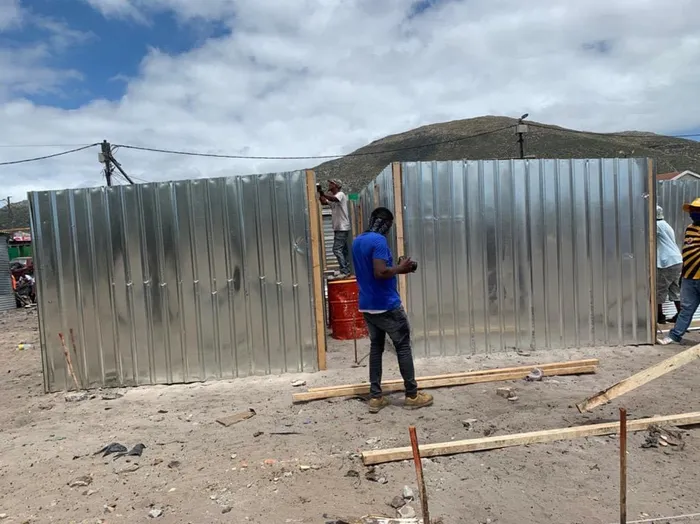Relief in sight for Masi fire victims

Temporary shelters are being built in Masiphumelele to house victims of a recent fire.
The City is building temporary shelters in Masiphumelele, following a fire that left thousands homeless.
The City is aiming to build 30 to 50 of the wood-and-corrugated-iron shacks a day to have 1000 completed before the end of February.
They will shelter the most vulnerable, including the elderly and disabled, while three spheres of government - the national Department of Human Settlements, Water and Sanitation; the provincial Department of Human Settlements and City human settlements directorate - work with the Housing Development Agency (HDA) on a permanent solution.
After the various officials met last week, R32 million was made available by the various departments to fast-track relief for the victims of the December 17 fire that destroyed 1000 homes and left more than 6000 people homeless.

The funds will be used to provide temporary structures, water and sanitation facilities, according to a joint statement.
The disaster zone, which is near the wetlands, has been cleared of debris, and mayoral committee member for transport, Felicity Purchase, said the temporary shelters would be built on its dry sections while the wetlands would be fenced off. Other shelters would be put up on a nearby piece of municipal land.
This is being done to allow the City to do groundwork in phases which includes the erection of electricity poles, access roads and basic water and sanitation services. The temporary structures will gradually be removed as permanent ones go up on the redesigned areas.
After visiting the site on Sunday, Malusi Booi, the mayoral committee member for human settlements, said if all went to plan the temporary shelters should all be ready by Monday February 22.
Bongiswa Pongolo, who lost everything in the fire, had lived with her two children in a two-bedroom shack in the wetlands. She had to cancel her trip to the Eastern Cape for Christmas, and she and her children are now living with a friend.
Surviving the first few days after the fire with only the clothes on their backs had been “very hard”, said Ms Pongolo.
When she arrived home on the day of the fire, her house had already been engulfed by flames.
The south easter fuelled the flames and the closest she could get to it was about 50 metres.
She tried to douse the flames leading up to her house with water from a 20-litre bucket but it was no use.
“There were flames everywhere, and the smoke was thick. There was no chance for me to save anything. It was just too hot, and there was just too much smoke,” she said.
Living Hope’s Reverend John Thomas said the devastation that followed the fire was immense.
“The fire did not just destroy shacks; it destroyed people's lives,” he said.
Some of the victims had been able to stay in the homes of those visiting the Eastern Cape during the festive season, but now that those people had returned, the victims found themselves homeless, he said.
Following the fire, Living Hope and the Care Company provided breakfast for the victims for five days and provided lunch and food parcels
Living Hope continues to support victims of the fire and has distributed three sets of clothing to each victim, provided food parcels, hygiene packs and baby packs containing nappies, formula and baby cereal.
Reverend Thomas said R700 000 had been raised for blankets, mattresses, and two-plate stoves.
“We believe that every human being has the right to basic care and dignity and will assist all fire victims,” he said.